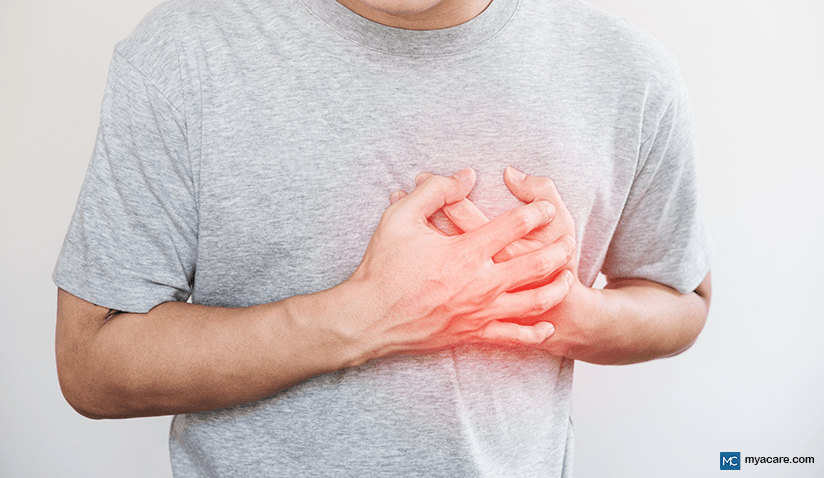FRACTIONAL CO2 LASER: A GUIDE TO SKIN RESURFACING AND RENEWAL

What is a Fractional CO2 Laser?
Benefits of Fractional CO2 Laser
Who Benefits from Fractional Laser Treatments
Side Effects and Complications
Fractional CO2 Laser Procedure Step by Step
Are you seeking a way to rejuvenate your skin and achieve a youthful appearance? Fractional CO2 laser treatment might hold the answer. This innovative technology has revolutionized the world of skin resurfacing and renewal, providing impressive results with minimal downtime.
This guide covers everything you need to know about the fractional CO2 laser, including its benefits, indications, procedure, and potential side effects. It aims to give you a comprehensive understanding of the procedure and how it can help you to reach your skin goals.
What is a Fractional CO2 Laser?
A fractional CO2 laser is one of several laser technologies for skin resurfacing and renewal. It delivers short pulses of light energy to the skin, creating tiny columns of heat penetrating deep into the dermis.
CO2 lasers release energy at a specific wavelength of 10,600 nm. The water inside the targeted cells absorbs this wavelength and heats up. When the epidermis absorbs this wavelength, it removes the outermost layers of the skin. This method encourages the body’s natural healing response, resulting in the production of new collagen and elastin fibers.[1]
The fractional CO2 laser can effectively treat a broad scope of skin matters, such as fine lines, scars, and spots. It is more selective than a full-face laser and can treat particular areas of the face, such as the forehead or cheeks.
It can also target the entire face. Full-face treatments are more comprehensive and provide consistent results, yet may require longer recovery.
Types of Fractional CO2 Lasers
There are two types of fractional CO2 lasers: ablative and non-ablative.
- Ablative fractional CO2 lasers remove the top layer of skin. They are more aggressive, provide dramatic results, and require longer recovery.
- Non-ablative lasers leave the skin's surface intact. These are less invasive and have a shorter recovery time, yet may require multiple treatments to achieve desired results.
Indications
Fractional CO2 lasers are a versatile option for many individuals.
Common indications include:
- Fine lines and wrinkles
- Acne scars or other scarring
- Uneven skin texture
- Sun damage or photoaging
- Age spots
- Uneven skin tone
- Enlarged pores
- Skin laxity (loss of skin elasticity) and baggy eyes
- Wart removal
- Sebaceous hyperplasia (overgrowth or enlargement of the sebaceous glands)
- Skin cancer
Skin Cancer Treatment
The fractional CO2 laser can treat certain types of skin cancer. Treatment can aid in the treatment of more prominent spots after removal takes place.
Types of skin cancer the CO2 laser can help prevent or treat include:
- Precancerous conditions
- Keratinocyte skin cancers, such as basal cell carcinoma and squamous cell carcinoma
- Cutaneous vascular complications like hamartomas
CO2 lasers have two benefits for keratinocyte skin cancer treatment. Firstly, they cause less bleeding, and secondly, they are suitable for patients who are on blood-thinning medication or have many cancerous spots.
Some downsides are not being able to confirm if the removal was complete and depending on later evaluations to ensure it worked.
Benefits of Fractional CO2 Laser
The fractional CO2 laser offers numerous benefits that result in smoother, more youthful-looking skin.
Improved Skin Texture and Tone
Heat-damaged skin below the ablation area contracts and shrinks, causing the collagen layers of the skin to tighten. When the skin heals, thicker layers grow back, leading to healthier, smoother skin with an even texture and tone.
A study found significant reductions in skin laxity, jowls, fat deposition, and horizontal neck line scores one month and one year after treatment for neck rejuvenation. One-year follow-up showed continued considerable improvement compared to the baseline. No complications were recorded.
Reduced Appearance of Wrinkles and Fine Lines
Fractionated CO2 lasers can target wrinkles and fine lines caused by skin irregularities by melting them. During regeneration, the new skin that grows back is free of blemishes.
Several studies have shown that CO2 laser treatment can significantly improve the signs of aging on the forehead, glabella, and around the eyes and mouth.
Reduced Scarring and Pigmentation Issues
CO2 laser resurfacing effectively treats acne, injury, and surgical scars by reducing their visibility. It minimizes the risk of scabbing compared to dermabrasion for surgical scars. Patients treated for acne scarring preferred the effects of a CO2 fractional laser over the ND:YAG laser.[2]
Minimal Downtime and Discomfort
Compared to other dermal lasers, CO2 lasers generate more heat and cause more significant blood clotting in the skin's blood vessels. This means there is less bleeding during a more extensive skin treatment.
The heat from a CO2 laser also helps speed up the healing process and creates a clean, bacteria-free surface on the skin. Fractional CO2 lasers use a fractionated beam, treating only a fraction of the skin at a time. This further enhances and speeds healing while lowering the risk of side effects.
Traditional CO2 lasers use a continuous beam of light to remove the top layer of skin, resulting in significant downtime and a higher risk of complications.
Long-lasting Results
The results of fractional CO2 lasers can last 3 to 5 years[3] or even up to 10 years, depending on the initial complaint.
Who Benefits from Fractional Laser Treatments?
The best candidates for fractional CO2 laser treatment are in good health and have realistic expectations for the outcome.
The fractional CO2 laser suits all skin types, yet certain skin conditions may affect the treatment plan. These include:
- Darker skin tones: Carbon dioxide laser resurfacing works best on people with fair skin, specifically Fitzpatrick type I-II. Individuals with a darker skin tone are at a higher risk for hyperpigmentation or scarring. In these cases, a dermatologist may recommend a lower-energy setting or alternative treatment.
- Active acne: If you have active acne, your dermatologist may recommend treating the acne first before undergoing fractional CO2 laser treatment. If present during the treatment, it may become infected afterward.
Your dermatologist will assess your skin and determine the best approach for your unique needs.
Fractional CO2 Laser Side Effects and Complications
As with any medical procedure, there is a risk of side effects and complications with fractional CO2 laser treatment. These may include:
- Redness and swelling: This is a normal part of the healing process and should subside within 2-3 days.[4]
- Itching and dryness: Your skin will feel itchy and dry as it heals. Moisturizers and other topical treatments can effectively manage these side effects. Flaking, peeling, and scabbing can last for 3-7 days.
- Hyperpigmentation: The skin may become darker or lighter in the treated area. This is usually temporary and tends to resolve in 3-14 days.
- Infection: An infection is possible during recovery. Following your dermatologist’s aftercare instructions can minimize this risk.
Contraindications
While fractional CO2 laser treatment is generally safe, there are some contraindications to consider. These include:
- Pregnancy or breastfeeding.
- Active skin infections, such as herpes skin infection or active acne.
- A history of keloid scarring.
- Autoimmune disease, burns, or irradiation may hinder the replenishment of skin cells and regeneration after the procedure.
- Oral isotretinoin use in the last 6 to 12 months can slow healing and cause bad scarring.
- Medical conditions like vitiligo and psoriasis, in which the koebnerization phenomenon can worsen, are unsuitable for this therapy.
Consulting a Dermatologist
Before undergoing fractional CO2 laser treatment, consulting a board-certified dermatologist is essential.
They will assess your skin and determine your suitability for skin laser resurfacing. The dermatologist will also talk to you about your goals and expectations before devising a tailored treatment plan to help you achieve the best results.
Fractional CO2 Laser Procedure Step-by-Step
Before the fractional CO2 laser treatment, pre-treatment consultations and a thorough review of the medical history are necessary to ensure the safety and suitability of the procedure.
A dermatologist will ensure you are comfortable with your decision, discussing the risks, complications, and their management. The treatment is painful without anesthetic. The doctor will also explain how you need to prepare for the procedure, your anesthesia options, recovery expectations, and how to look after the skin afterward.
Before the procedure, your dermatologist may ask that you:
- Refrain from sunbathing or intense sun exposure for a month before the treatment.
- Abstain from medication that increases sun sensitivity, like doxycycline, for at least 3 days before the procedure.
- Cease smoking two weeks before and post-treatment, as it can disrupt the healing process.
During the Procedure
The fractional CO2 laser procedure typically takes 30-120 minutes, depending on the size of the treatment area.[5]
You can expect the following during the procedure:
- The dermatologist will use a numbing cream on the treatment area to minimize discomfort.
- You will cover your eyes with protective eyewear during the procedure.
- The dermatologist will use the fractional CO2 laser to deliver short bursts of light to the target skin areas.
- A cooling device minimizes discomfort and reduces the risk of side effects.
- At the end, the treated skin will be coated with an antibacterial ointment and a non-stick dressing. Keep this on as instructed, typically for a 24 to 48-hour period.
Recovery can take as little as 5-7 days, although the skin may still be sensitive until after two weeks.
Your dermatologist will provide aftercare instructions, including how to care for your skin as it heals.
Post-Procedure Skin Care
Your dermatologist will give detailed skin care instructions for looking after your skin until it heals.[6]
General guidelines include:
- Wash your hands before touching your skin.
- Take prescription medication without deviating.
- Keep your skin moisturized at all times.
- Refrain from skin picking.
- Shield your skin from direct light until it heals properly.
- Avoid personal items that cause discomfort or a burning sensation.
Alternative Treatments and How They Compare
While the fractional CO2 laser is considered one of the best for skin resurfacing, alternative treatments are available as well, which include:
- Chemical peels: In this procedure a chemical solution is used to clear the top layer of the skin, resulting in smoother, more youthful-looking skin.
- Microdermabrasion: Microdermabrasion uses a device to exfoliate the skin, revealing a smoother, brighter complexion.
- Microneedling: This procedure uses tiny needles to induce micro skin injuries, stimulating the body’s natural healing response.
CO2 lasers are better at controlling the location, depth, and degree of thermal damage than other methods. The above alternatives may take longer and be more cost-effective per session, yet more expensive in the long run. Their scope of action is not as extensive as a CO2 fractional laser.
In treating premalignant lesions and actinic damage, CO2 lasers might not be as efficient as other techniques like chemical peels or dermabrasion. CO2 lasers are also not suitable for laser hair removal in the same way as a ND:YAG laser.[7]
Conclusion
The fractional CO2 laser is a treatment for skin resurfacing and renewal, providing impressive results with minimal downtime. You can decide whether this treatment is right for you by understanding its benefits, indications, and potential side effects. Consult a board-certified dermatologist to learn more about how the fractional CO2 laser can help you achieve your skin goals.
To search for the best health providers for dermatology in Croatia, Germany, Greece, Italy, Malaysia, Singapore, Slovakia Spain, Thailand, The UAE, the UK, and the US, please use our free search engine.
To search for the best doctors and healthcare providers worldwide, please use the Mya Care search engine.
Sources:
- [1] https://www.ncbi.nlm.nih.gov/books/NBK560544/
- [2] https://link.springer.com/article/10.1007/s10103-023-03855-6
- [3] https://odonnellveinandlaser.com/blog/how-long-do-laser-skin-resurfacing-results-last/
- [4] https://zoskincentredtsp.com/co2-fractional-laser/
- [5] https://www.healthline.com/health/beauty-skin-care/co2-laser#how-it-works
- [6] https://drtorgerson.com/non-surgical-procedures/laser-treatments-toronto/take-care-skin-deep-fractional-laser-treatments/
- [7] https://pubmed.ncbi.nlm.nih.gov/11870792/
Disclaimer: Please note that Mya Care does not provide medical advice, diagnosis, or treatment. The information provided is not intended to replace the care or advice of a qualified health care professional. The views expressed are personal views of the author and do not necessarily reflect the opinion of Mya Care. Always consult your doctor for all diagnoses, treatments, and cures for any diseases or conditions, as well as before changing your health care regimen. Do not reproduce, copy, reformat, publish, distribute, upload, post, transmit, transfer in any manner or sell any of the materials in this blog without prior written permission from myacare.com.



